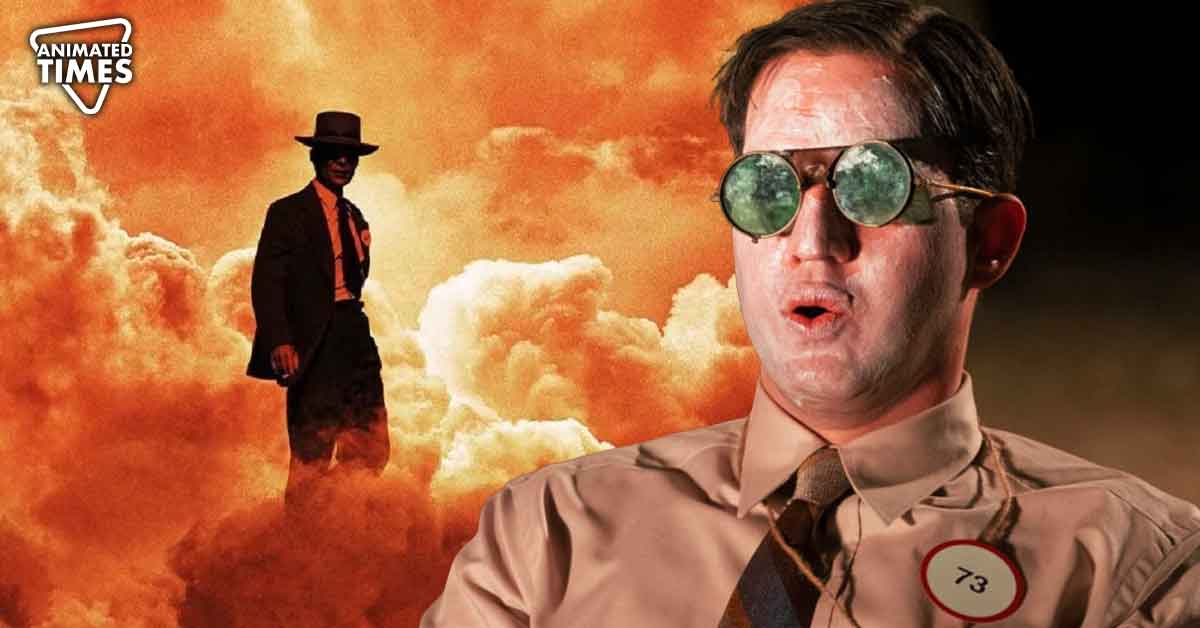“It’s basically a heat flux”: Oppenheimer Trinity Test Scene Gets Debunked by Nuclear Expert for Using Sunscreen to Protect Against an Atomic Bomb
Christopher Nolan’s Oppenheimer tries to capture J. Robert Oppenheimer’s moral quandary over his genius that broke the scientific barriers of his time but also produced dire consequences.
The year 1945 saw the theoretical physicist and other researchers spearhead the Manhattan Project in a New Mexico desert. The test, known as Trinity, proved to be a success and the atomic bomb it yielded subsequently forever changed the course of modern history.

Needless to say, the importance of the Trinity Test wasn’t lost on Nolan, who went above and beyond to recreate the momentous event for the big screen.
Read more: Christopher Nolan Was Forced to Change ‘Oppenheimer’ Script Because of One Actor
Nuclear Expert Examines Christopher Nolan’s Use of Sunscreen in Oppenheimer
Christopher Nolan isn’t a filmmaker who compromises on realism and has earned huge respect in the industry partly because of his drive to shoot scenes without much involvement of artificial avenues.

For Tenet he had crashed a real plane, and in his latest venture, the 53-year-old decided to drop CGI interference for the scene of the atomic explosion. Through different measures, including the use of the filming technique known as forced perspective, Nolan managed to mimic the Trinity test.
Now, nuclear expert Greg Spriggs has analyzed Oppenheimer to give his take on just how realistic the genius director’s exploits were for the Cillian Murphy starrer. Spriggs admired the overall work but did flag his concerns regarding the effectiveness of the scientists using sunscreen to protect themselves from the explosion’s impact on the scene.
The extract from his full analysis for Insider says:
“… They were all laying down thinking that the shock wave might get to them and if they were laying down that it wouldn’t be a direct hit. You don’t want to have a big surface area if the shock wave is coming over. You want to be kind of laying flat. There have been situations where we’ve had tests where the yield was a little bit higher than what people thought or the wind blew the bomb a little bit closer to the observers, that people have actually gotten a little bit of a sunburn. I don’t think the sunscreen would’ve helped very much. It’s basically a heat flux that hits you. I guess it would’ve helped a little bit, but not much.”
Clearly, Spriggs wasn’t fully convinced with the sunscreen part and ended up giving an accuracy rating of 7/10 to Oppenheimer. Not sure a perfectionist like Nolan would find the rating very desirable!
Christopher Nolan Did His Best to Ditch CGI in Another Epic Movie
As mentioned earlier, Nolan likes to test the limits of his own mind and resources at hand in his pursuit of realism and this phenomenon isn’t some quirky trend he picked up lately.

The Batman Trilogy director has always had a penchant for keeping things real and minimizing the use of CGI. He made his 2014 science fiction Interstellar – which collected $773 million at the box office – without much help from digital magic.
To cut the gravity factor and show his characters floating through space, Nolan used a Hollywood trick labeled as rear projection. Obviously, where things were no longer practical, he called in computer geniuses to do their thing.
Moreover, despite plenty of extraterrestrial scenes, Nolan avoided using green screens. He instead used 60-foot projections of the cosmos on set backgrounds.
Source: Insider – YouTube





